Part of ensuring our students are well-rounded learners includes participation in the arts. In the elementary grades, students take classes in art, music, and drama; then in the middle grades they begin to focus on an art discipline of their choosing to continue through high school.
At BASIS International Schools, our teachers, school leaders, and members of student leadership from different grades and classes provide unique and creative ways for students to explore art and art history in several different mediums. Let’s take a look at what students in our schools have learned!
Art Movements Exploration
This year in 3rd grade, students are studying Art Movements which are defined by moments in history where artists aligned stylistically to express similar concerns and ideas. In our last unit, we studied the Fauvist painters which were most famously known by the artists Henri Matisse and Andre Derain. The Fauvist painters were known for saturated bright colors, warm-cool color relationships, loose moving brushstrokes, and an expressionistic style which became the foundation for the learning content in this unit. Students learned about composition and creating space on their canvas, as well as complementary color relationships and color gradation and variety. Each student was expected to take the above concepts and apply them in their unique landscape or portrait painting and the results were remarkable.
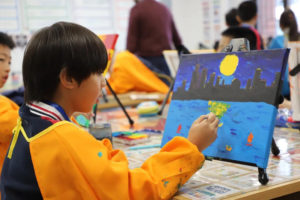
I love seeing the various approaches and creative solutions that students take to demonstrate that they understand the concepts being taught. This creative process along with self-evaluation also allows students the space to generate a personal connection to the learning content and engage higher-order thinking such as creation, analysis, and evaluation.
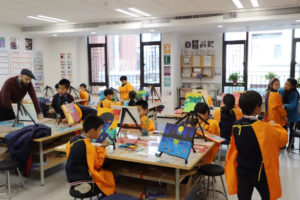
For the upcoming year, we will be continuing our studies of Art Movements such as abstract expressionism, figurative art, cubism, and the Harlem Renaissance. The expectation is that students deepen their understanding of art movements as well as continue to broaden their understanding of what art is and what it can be. Ultimately learning from a variety of artists and styles will expand the range of skills, techniques, approaches, concepts, etc. so that our young artists can determine what resonates with them on the path of finding their artistic voice.
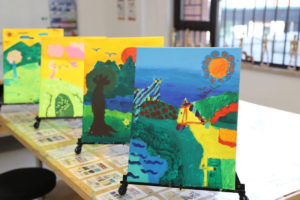
Stephen Backhus, Art teacher, BASIS International School Nanjing
Pop-Up Art Shows
The Art Department at BASIS International School Shenzhen has challenged upper school students to display their work as part of pop-up art shows. In November 2020, the 2nd annual Pop-up Art Show featured work from students in grades 7 – 12 and drew a large number of students and faculty to view their interactive installations. While students do not yet have a full body of artwork for a show this early in the year, Art teacher Mara Gil tasked the students with designing interactive installations and gave students the opportunity to choose a theme, design their space, and create new artwork based on pieces from class.
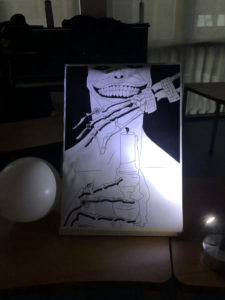
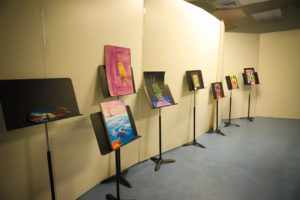
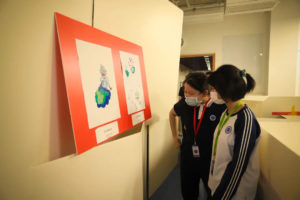
Student artists were given 40 minutes to set up and 60 minutes to display the work, forcing them to think creative and logistically about how to best use the space, engage visitors, and the impermanence of their art. At the end of 60 minutes, the installations were taken down, and the spaces returned to their regular usage.
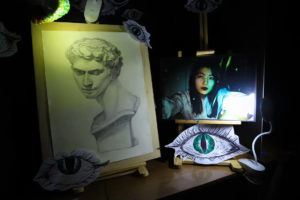
Art History
In our journey through different epochs and cultures, our Art History & Practice class covers some of the most well-known artists and global art movements. But one of my favorite stops is the Renaissance. A time period brimming with innovation, scientific discovery, and artistic genius, the era continues to inspire even today.
In our class, we analyze the techniques that characterize Renaissance painting and set it apart from medieval art. We focus on how perspective (specifically one-point perspective) gives Renaissance painting a sense of space and realism that previous Art Movements lacked. So what better way to learn how one-point perspective works than actually seeing it in person?
Our class headed down to San Francisco Blvd. on campus to draw the view from behind the cafeteria, looking towards the field. Drawing from life, students were able to observe how the path that goes to the field leads to a “vanishing point,” just like in our classroom drawing practice. We then worked meticulously to render the buildings that populate our school.
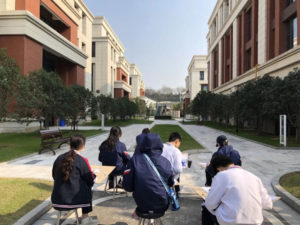
Students created beautiful drawings of San Francisco Blvd., capturing it with detail and enhancing it through creative additions. This then led to another common Renaissance practice–the use of “cartoons.” No, not cartoons like Mickey Mouse or Pokemon which we see on TV today. Cartoons were large drawings done on paper, which were then traced onto a new surface.
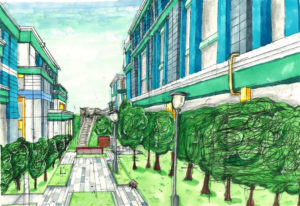
Instead of transferring our drawings to a new surface by tracing, we used the technology we have available today (printers and scanners). Students were then able to add color to their drawings, resulting in the outstanding artworks shown here.
Daniel Dias, Art History teacher, BASIS International School Nanjing
Art as Therapy
BASIS International School Guangzhou’s CAPS Psychology Club has been in the midst of a long term art therapy project titled “Emozioniamoci With Art” since 2019. The club recently organized two fluid painting events for Grades 5 – 7 students in December and January, which also served to raise funds for the charity organization Shenzhen Association for Families with Persons with Intellectual Disabilities.
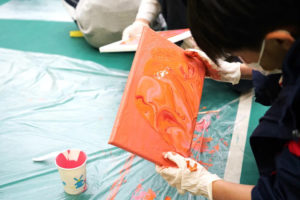
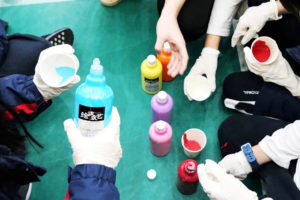
“The CAPS Psychology Club has initiated a long-term project called “Emozioniamoci With Art” since 2019, which focuses on understanding emotions with the use of art and developing emotional intelligence. Fluid painting is more about creative expression than artistic talent. Observing the fluid dynamic and integration of conflicting emotions in a symbolic mean, participants have a deeper understanding of emotion control and balacne. “Emozioniamoci With Art” is achieved by the support of different people. Special thanks to (AP Art teacher) Ms. Sandra for providing professional instructions and the art department for supplies support. Also thanks to Ms. Sumi and Ms. Vanessa for supporting the project.”
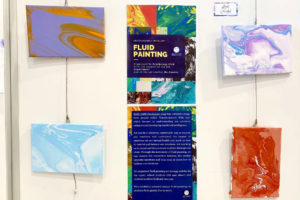
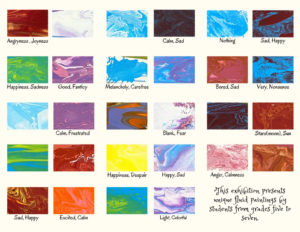
Christiana Kang, Student Leader of CAPS Psychology Club, BASIS International School Guangzhou
For more information about careers with BASIS International Schools, visit our careers website.
Learn more about opportunities for the 2021-22 school year here.